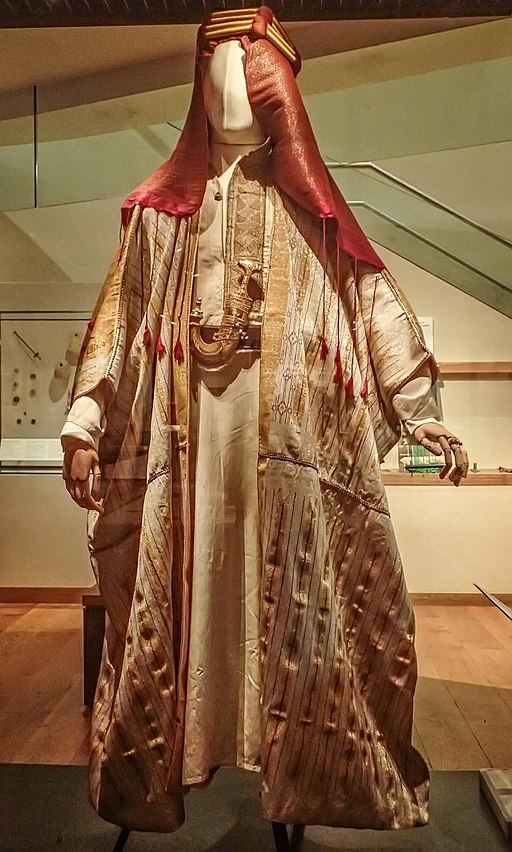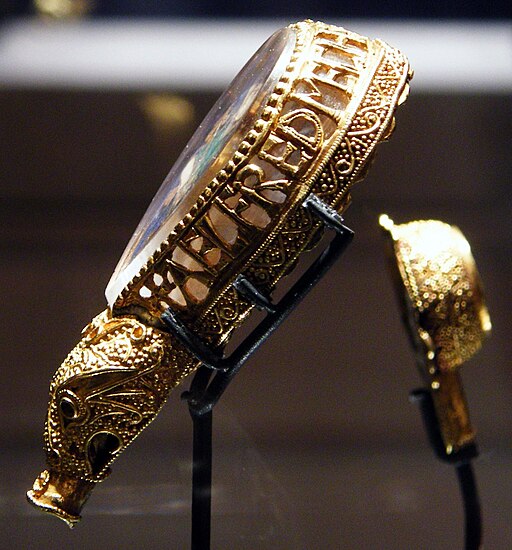
“Saint Eulalia” by John William Waterhouse depicts the aftermath of the death of Eulalia of Mérida. According to her legend, the snow was sent by God as a shroud to cover her nakedness.
The white dove, flying upwards above the heads of the crowd of mourners, is indicative of Eulalia’s soul flying up to Heaven. Her body is at the foot of a cross. The Roman guards restrain all the mourners to the background.
This composition is one of Waterhouse’s most daring artworks. The body is dramatically foreshortened, and the snow contrasts with 12-year’s exposed flesh.
Waterhouse’s sensitive handling of the subject, the youth of the saint, and the historical context of the painting allowed him to escape Victorian era criticism for the depiction of nudity.
She is regarded as the Patron Saint of Runaways and Torture victims.
Eulalia of Mérida
Eulalia of Mérida (292 – 304) was a young Roman Christian martyred in Augusta Emerita, the capital of Lusitania, modern Mérida, Spain, during the Persecution of Christians.
Eulalia was a devout Christian, aged 12–14, whose mother sequestered her in the countryside because all citizens were required to avow faith in the Roman gods.
However, Eulalia ran away to profess herself a Christian and challenged the authorities to martyr her.
The judge’s attempts to flatter her and bribe her failed. According to a fifth-century poet, she said:
“Isis, Apollo, and Venus are naught,
Nor is Maximian anything more;
Nothing are they, for by hand, they were wrought.”
Eulalia was then tortured with hooks and torches, and burnt at the stake. She taunted her torturers all the while until suffocating from smoke inhalation.
As she expired, a dove flew out of her mouth. This sight frightened away the soldiers and allowed miraculous snow to cover her nakedness.
A shrine over Eulalia’s tomb was soon erected. Veneration of Eulalia was popular with Christians by 350, and her relics were distributed through Iberia.
Her shrine was the most popular in Visigothic Spain, and she was made patron saint. There is debate about whether Saint Eulalia of Barcelona, whose story is similar, is the same person.
Eulalia was invoked as the protector of Christian troops in the Reconquista. She was the patron of the territories of Spain during their formation.
Eulalia of Mérida
- Born: 290 – Mérida, Spain
- Died: 304 – Mérida
- Venerated: Roman Catholic Church, Orthodox Catholic Church
- Canonized: 304 AD
- Shrine: Cathedral of San Salvador
- Patronage: Mérida, Spain; Oviedo, Spain; Runaways; torture victims; widows; inclement weather
John William Waterhouse
Waterhouse worked in the Pre-Raphaelite style, several decades after the breakup of the Pre-Raphaelite Brotherhood, which included artists such as Dante Gabriel Rossetti, John Everett Millais, and William Holman Hunt.
Waterhouse embraced the Pre-Raphaelite style even though it had gone out of fashion in the British art scene, by the time he painted this painting.
He painted over 200 works, mainly in the genres of classical mythology, and historical or literary subjects.
Saint Eulalia
- Title: Saint Eulalia
- Artist: John William Waterhouse
- Medium: Oil on canvas
- Date: 1884
- Dimensions: Height: 188.6 cm (74.2 in); Width: 117.5 cm (46.2 in)
- Type: Pre-Raphaelite
- Museum: Tate Britain
John William Waterhouse
- Name: John William Waterhouse
- Movement: Pre-Raphaelite
- Born: 1849 – Rome, Papal States
- Died: 1917 (aged 67) – London, England, United Kingdom
- Nationality: British
- Notable works:
- The Lady of Shalott
- The Favorites of the Emperor Honorius
- Circe Invidiosa
- Diogenes
- I Am Half-Sick of Shadows, Said the Lady of Shalott
- Hylas and the Nymphs
- Echo and Narcissus
- Ulysses and the Sirens
- Consulting the Oracle
- A Tale from the Decameron
- Circe Offering the Cup to Ulysses
- Saint Eulalia
A Tour of the Pre-Raphaelite Artists
- John Everett Millais
- Isabella
- Christ in the House of His Parents
- The Martyr of Solway
- Ophelia
- Blow Blow Thou Wind
- The Black Brunswicker
- A Dream of the Past: Sir Isumbras at the Ford
- John William Waterhouse
- The Lady of Shalott
- The Favorites of the Emperor Honorius
- Circe Invidiosa
- Diogenes
- I Am Half-Sick of Shadows, Said the Lady of Shalott
- Hylas and the Nymphs
- Echo and Narcissus
- Dante Gabriel Rossetti
- Lady Lilith
- Dante’s Dream
- Dante Gabriel Rossetti – Self Portrait
- Marie Spartali Stillman
- Love’s Messenger
- Ford Madox Brown
- The Star of Bethlehem
- King Cophetua and the Beggar Maid
- Henry Holiday
-
- Dante and Beatrice
-
- Edward Burne-Jones
- The Star of Bethlehem
- King Cophetua and the Beggar Maid
~~~
“To see clearly is poetry, prophecy, and religion, all in one.”
– John Ruskin
~~~
Photo Credit: John William Waterhouse / CC
Top Posts & Pages








 Sponsor your Favorite Page
Sponsor your Favorite Page SEARCH Search for: Search Follow UsJoin – The JOM Membership Program
Become a Patron!
Sponsor a Masterpiece with YOUR NAME CHOICE for $5
Share this:
- Tweet
